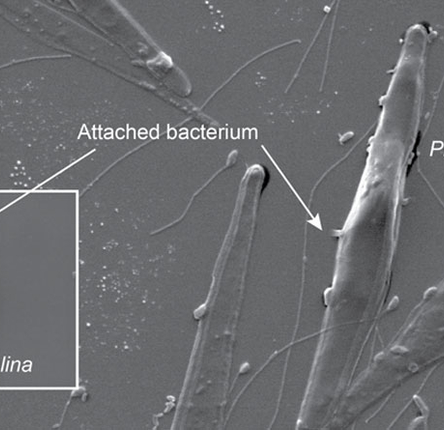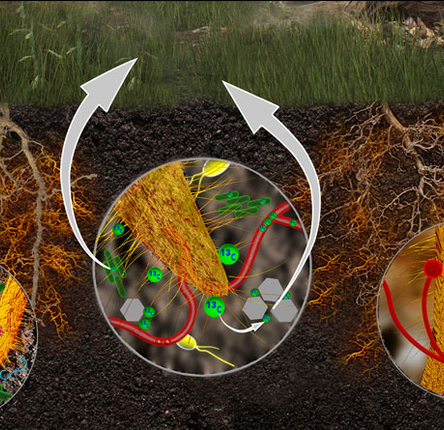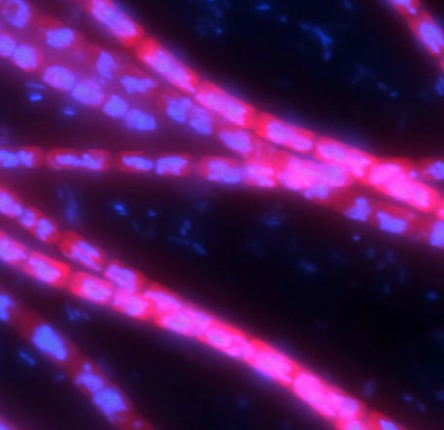Community systems biology of microscale interactions for sustainable bioenergy
The µBiospheres SFA research program seeks to understand phototroph–heterotroph interactions that shape productivity, robustness, the balance of resource fluxes (carbon, nutrients, water), and the functionality of the surrounding microbiome. Photosynthetic algal and plant systems have the unrivaled advantage of converting solar energy and carbon dioxide into useful organic molecules. Their growth and efficiency are largely shaped and assisted by the microbial communities that dwell in and around them and live off their products. We hypothesize that different microbial associates not only have differential effects on host productivity but can change an entire system’s resource economy—a critical metric for sustainable bioenergy cultivation.
Our ultimate goal is to discover cross-cutting principles that regulate formation and maintenance of phototroph–microbial interactions and their system-level resource allocation consequences, in order to develop a general predictive framework for system-level impacts of microbial partnerships. While these interactions occur at microscale interfaces, they are rarely measured at micron scales. We focus on two bioenergy systems (microalgae and C4 grasses), and our approach encompasses single cell analyses, quantitative isotope tracing of elemental exchanges, system-scale ‘omics measurements, and multi-scale modeling to address this gap.
News Highlights
September 1, 2023
New SFA publication shows detection of a new class of non-photosynthetic nitrogen fixation
SFA scientists used metabolomic profiling to characterize exudates from the diatom Phaeodactylum tricornutum over algal growth and identified a P. tricornutum exometabolite, which can act as a sole carbon source for some phycosphere bacterial isolates.
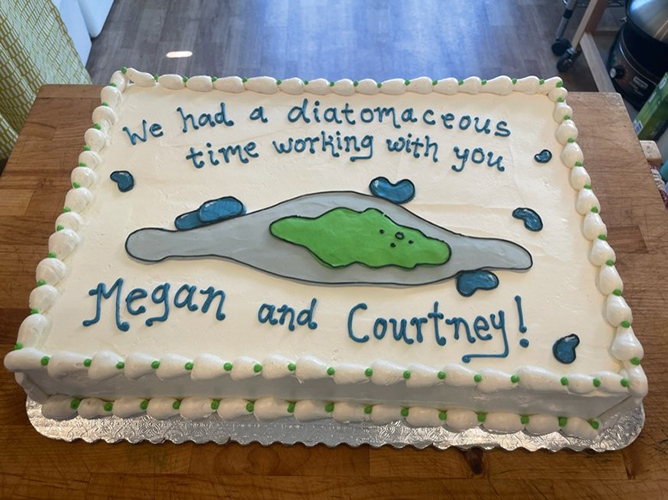
Goodbyes and Hellos!
The SFA said goodbye to two team members and welcomed four new team members.
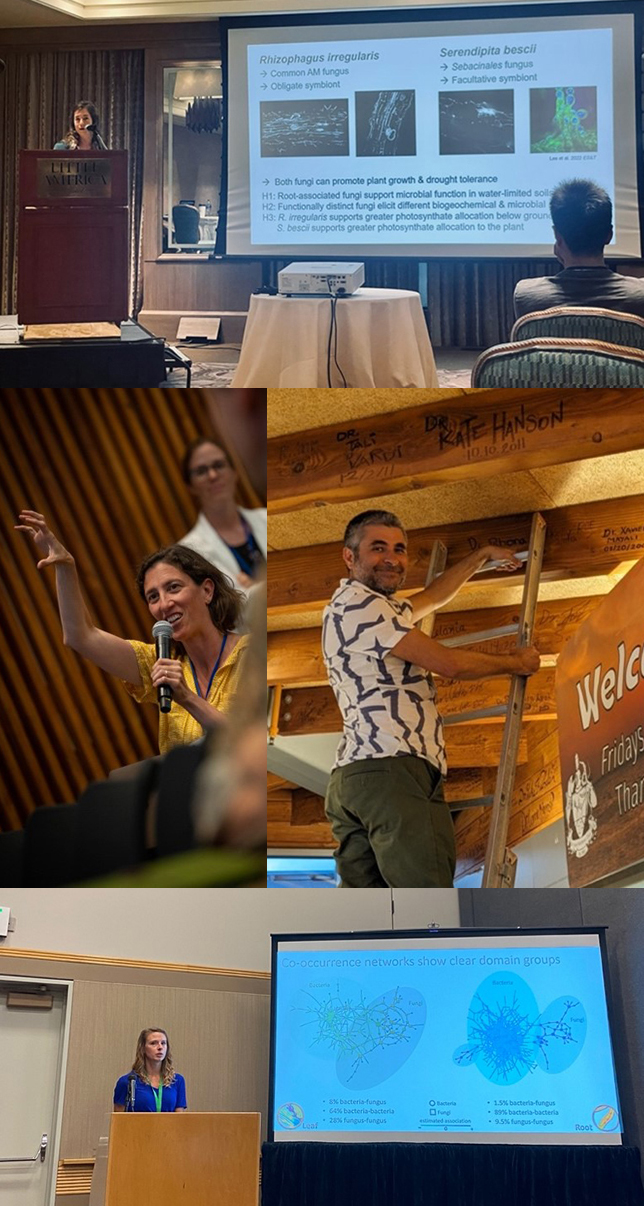
SFA representation at summer conferences
SFA team members attended a number of conferences during the 2023 summer.


